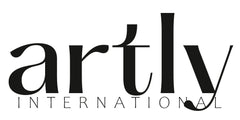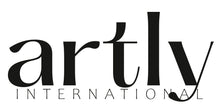Navigating Art Auctions
Navigating the Art Market: Auctions
The contemporary art market pulsates with the rhythm of the auction gavel. For the uninitiated, navigating this arena within the art market can feel akin to deciphering a cryptic language – a world of hushed whispers, rapid-fire bidding, and million-dollar hammer prices. This guide aims to demystify the art auction experience, contrasting the experience of in-person auctions with the convenience of online platforms. We'll explore strategies for finding affordable gems and investment-worthy pieces, empowering you to participate with informed confidence.
In-Person Bidding
In-person auctions offer an experience unmatched in the digital sphere. Consider the 2021 Sotheby’s London auction where Banksy's iconic Love is in the Bin (2018) became the star of the show. Both seasoned and new bidders battled it out for the piece which reached a hammer price over $25.5 million USD – over three times the high estimate. Witnessing the physical painting likely fueled the emotional charge in the room. Additionally, in a historic moment for the art world, Pablo Picasso's Femme à la montre (Woman with a Watch) shattered auction records in November 2023, selling for $139.36 million USD at Sotheby's and became among the most expensive artworks ever sold.
However, the immediacy of the saleroom also presents drawbacks. Emotional impulses can cloud judgement, exceeding pre-established budgets. Furthermore, the geographic limitations restrict participation to a select few.
Online Bidding
The advent of online auctions has democratized access to the art market. Collectors can now participate from anywhere in the world (with internet access, of course). This expanded reach often fosters a more competitive environment, as seen in the record-breaking sale of Andy Warhol's self-portrait through Sotheby's online platform in 2021. The final price of $11.6 million USD demonstrates the growing acceptance of virtual auctions.
While online platforms offer convenience and global reach, the virtual realm lacks the sensory engagement of the physical auction. Meticulous research, including scrutinizing high-resolution images, detailed condition reports, and leveraging resources for provenance and market value, becomes even more crucial.
Affordable Art
While record-breaking masterpieces grab headlines, art auctions offer a wider selection. Look for works by emerging artists – rising talents whose pieces showcase promise at accessible prices. For a more established artist, consider editioned prints like limited-edition silkscreens or etchings, which can be significantly less expensive than original paintings. Artworks from the Post-War and Contemporary periods, as well as decorative arts, can also be found at a price point within reach.
Investment Potential
While not every purchase will result in a dramatic rise in value, there's the chance of finding a hidden gem by an emerging artist whose work is poised for appreciation. The key lies in thorough research, a discerning eye, and a willingness to take calculated risks.
Jean-Michel Basquiat's art soared from 80’s obscurity to near $100 million today, with a single work selling for $48 million at Christie's in 2013. In 2019, a relatively unknown artist named Flora Yukhnovich's painting "Rhizome" fetched a staggering $722,500 at a Christie's auction in Hong Kong. Far exceeding expectations, this sale solidified her reputation and ignited a collector frenzy for her work.
While success stories abound, navigating the art auction world requires preparation. Investment-minded art collectors are aware of market trends. They look for artists with originality and lasting power. They build relationships with reputable galleries, curators, and auction houses for early access to promising talent. They are aware of the risks involved; the economic principles of supply and demand and market fluctuations also apply to the art world.
Research is Key
Regardless of the chosen platform, research is key. A thorough examination of the artwork's provenance, verification of authenticity, and a comparative analysis of similar works recently sold at auction are all essential steps in developing a sound bidding strategy. Consider the recent controversy surrounding a Gerhard Richter forgery that went up for auction at a reputable auction house. Thorough research could have prevented such a costly mistake. Consulting with a reputable art advisor can prove invaluable for navigating the complexities of the art market. By attending the auction preview or thoroughly examining online images and descriptions, you can assess the condition and potential value of these artworks before placing your bid.
Determining artwork value is a complex process, and even the experts aren't fortune tellers. The published estimate set by the auction house is a range suggesting potential value, based on research similar to what I've recommended for you. However, there is more to the story. The reserve price, the minimum amount acceptable to the seller (known only to them and the auction house), typically falls within the low end of the estimate. Finally, to entice participation, the starting bid is set strategically lower, often around half the estimated value.
These figures offer a starting point, but your own research is crucial. Analyze past sales of similar works, the artist's background and critical reception, and consider the artwork's significance within their oeuvre. Ultimately, you need to determine your own value threshold and stick to it.
Ultimately, the most successful art collectors have a genuine passion for art and a desire to support emerging talent. While financial gain can be a motivator, a deep appreciation for the work itself informs their buying decisions. By approaching this arena with informed strategy and a discerning eye, collectors can navigate the bidding process with confidence, and potentially secure a piece that not only enriches their personal collection but also holds the promise of future value.
Contact us here to discuss your art collecting goals and explore how we can assist you with tasks like Market Value Evaluation, Auction Navigation, and Locating Specific Artworks.




Leave a comment